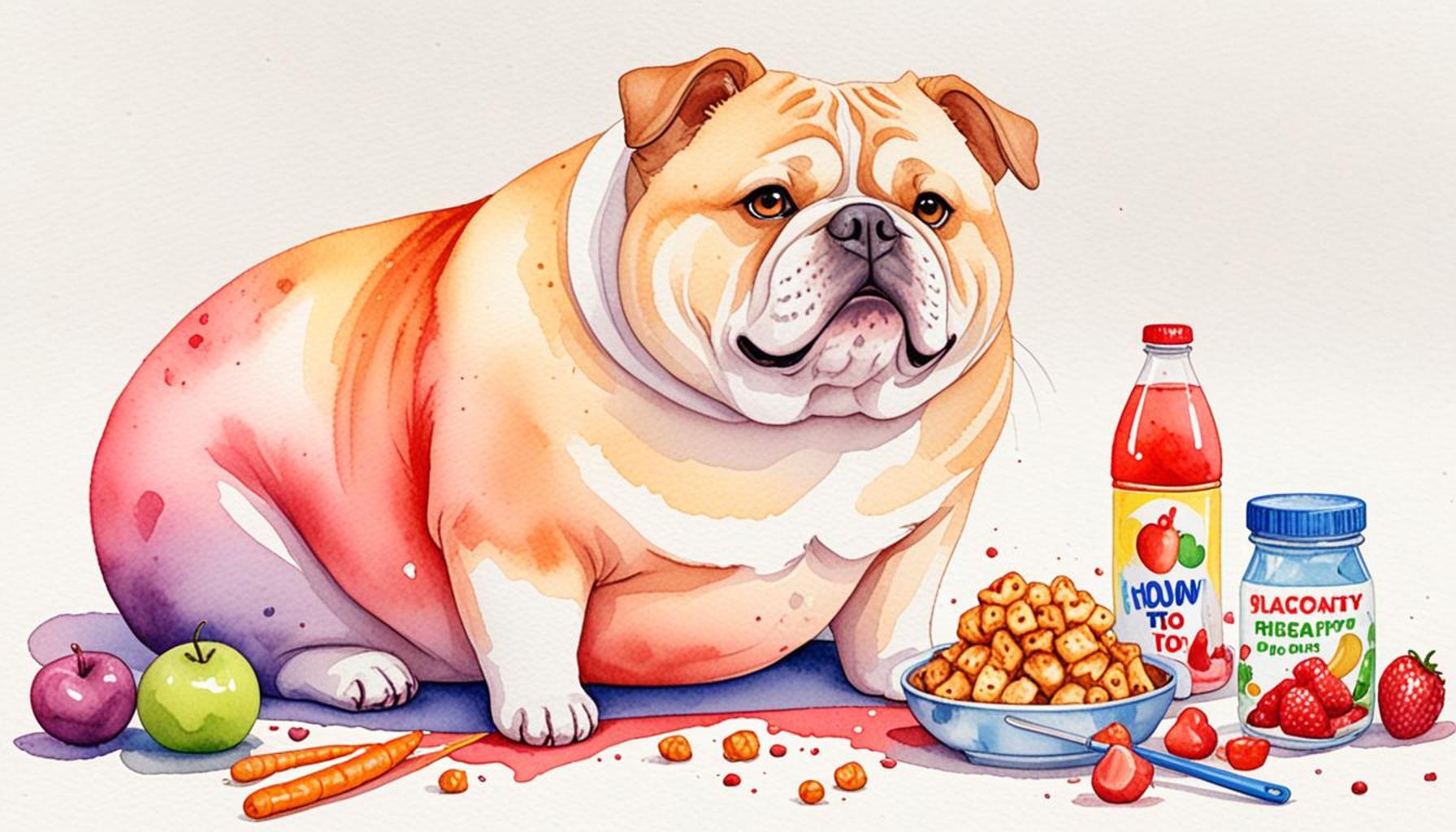How to Deal with Obesity in Pets

The Alarming Rise of Pet Obesity
Obesity in pets has become a significant concern for pet owners, veterinarians, and animal welfare advocates across the United States. Recent studies reveal an alarming statistic: nearly 60% of dogs and 56% of cats are categorized as overweight or obese. This trend is not just an aesthetic issue—it’s a pressing health crisis that could threaten the lives and well-being of countless animals. Understanding and addressing obesity in pets is now more critical than ever.
Proactive Measures to Combat Obesity
Dealing with pet obesity requires a multifaceted approach that encompasses proper nutrition, regular exercise, and professional veterinary advice. Here are some specific strategies that can help pet owners manage their pets’ weight effectively:
- Monitoring Diet: To start, it is essential to understand your pet’s dietary needs, which can vary based on their age, size, breed, and overall activity level. Providing a balanced diet rich in proteins, healthy fats, and fiber, while limiting processed and high-calorie treats, is paramount. Owners can consult with pet nutritionists to create a tailored meal plan that meets their pets’ unique requirements.
- Regular Exercise: Engaging your pet in daily physical activities—whether through walks, agility training, or interactive play—can significantly reduce weight. For instance, a daily 30-minute walk can help dogs burn calories while providing mental stimulation. Consider incorporating games that involve chasing or fetching, which can make exercise enjoyable for both pets and owners.
- Veterinary Guidance: Consultation with a veterinarian is crucial for developing a safe and effective weight management plan. Veterinarians can assess your pet’s health, suggest appropriate weight loss goals, and even recommend prescription diets specifically designed for weight control.
Health Risks Associated with Obesity
Beyond the obvious issues related to pet comfort and mobility, obesity can lead to numerous serious health problems. For example, pets that are overweight have an increased likelihood of developing:
- Joint Problems: Extra weight places additional stress on joints, leading to conditions like arthritis, which can severely limit mobility and lead to chronic pain.
- Diabetes: Obesity can disrupt the body’s ability to regulate insulin, increasing the risk of diabetes—a serious condition requiring lifelong management.
- Heart Disease: Overweight pets are at a higher risk for heart disease and other cardiovascular issues, which can reduce their quality of life and lifespan.
As responsible pet owners, recognizing the signs of obesity, such as difficulty in exercising, excessive weight around the waist, and a lack of energy, is essential. Taking immediate action—whether it’s changing their diet, increasing exercise, or seeking veterinary help—can help your furry friend live a healthier and longer life.
Ultimately, educating yourself about pet obesity and understanding the importance of weight management can make a world of difference in the lives of pets. The journey to a healthier pet begins with awareness, proactive measures, and supportive professional guidance.
DISCOVER MORE: Click here to learn about stress effects on your pets
Implementing an Effective Weight Management Plan
To tackle the growing issue of obesity in pets, pet owners must adopt a proactive and informed approach. Creating a comprehensive weight management plan requires dedication and consistency. Here are some essential strategies pet owners can employ to effectively address obesity in their furry companions:
- Adjusting Portion Sizes: One of the most straightforward methods to combat obesity is by managing portion sizes. Many pet owners are unaware of the recommended feeding amounts for their specific breed or size. Consulting the feeding guidelines on pet food packaging or working with a veterinarian can provide clarity on appropriate portion sizes. Additionally, measuring food using a standard cup can help ensure accurate servings, preventing the unintentional overfeeding that often leads to weight gain.
- Choosing the Right Food: Not all pet foods are created equal; some are loaded with fillers and unhealthy additives. Selecting high-quality pet food that focuses on whole ingredients, such as animal proteins and complex carbohydrates, is vital. Look for options that highlight weight management or are labeled “light.” These diets are often formulated to reduce calorie intake while providing sufficient nutrition, helping to facilitate weight loss.
- Timely Treats: Treats are a common minefield in the battle against pet obesity. While it is important to reward your pets, being mindful of treat calories is essential. Instead of high-calorie snacks, consider healthier alternatives such as baby carrots, green beans, or specially formulated low-calorie treats. Creating a system of training or playtime with minimal treats can keep your pet engaged without compromising their diet.
- Consistency is Key: Establishing a routine can make all the difference in achieving and maintaining a healthy weight. Regular feeding times and exercise schedules help pets adjust to a healthier lifestyle. It is important to remain consistent, even when faced with tempting treat opportunities or busy days, to reinforce healthy habits.
By implementing these strategies, pet owners can create a solid foundation for their pets’ weight management efforts. It’s crucial to remember that weight loss should be gradual; rapid weight loss can be detrimental to a pet’s health. Involving your veterinarian throughout the process ensures a safe and effective weight loss plan tailored to your pet’s needs.
Understanding your pet’s physical condition, dietary requirements, and daily activity needs is essential for success. As pet obesity becomes increasingly prevalent, being a proactive pet owner can significantly impact your pet’s health and happiness.
As you embark on this journey to help your pet achieve a healthier weight, remember that patience and persistence are vital. Defining achievable goals, tracking progress, and celebrating small victories can motivate both you and your furry friend along the way.
| Advantage | Description |
|---|---|
| Health Improvements | Managing pet obesity can lead to a longer lifespan and a healthier life. Pets that maintain a healthy weight experience fewer joint problems, diabetes, and heart diseases. |
| Increased Activity | Regular exercise incorporated into a weight management plan can enhance your pet’s energy levels and overall well-being. This can improve their mood and promote a more active lifestyle. |
When confronting the issue of obesity in pets, it is essential to recognize that maintaining a balanced diet and regular physical activity can significantly enhance your pet’s quality of life. Weight management is not merely a cosmetic issue; it is a vital component of a pet’s health that requires immediate attention and action. Engaging in regular exercise is crucial, as it not only promotes weight loss but also strengthens the bond between the pet and its owner through enjoyable activities. Furthermore, a proper diet tailored to your pet’s specific needs can prevent obesity-related health problems and contribute to a more vibrant, active life. Addressing these aspects will ultimately yield positive changes in both the behavioral and physical well-being of your pets, steering them towards a healthier future.
LEARN MORE: Click here for essential pet vaccination tips
Encouraging Regular Exercise and Engagement
In conjunction with a weight management plan that focuses on diet, encouraging regular exercise is paramount for combating pet obesity. Just like humans, pets require physical activity to maintain a healthy weight and overall wellness. Here are effective ways to incorporate more exercise and engagement into your pet’s daily routine:
- Daily Walks: Taking your dog for daily walks is one of the simplest yet most effective ways to encourage activity. Regular walks not only help with weight management but also improve mental stimulation and behavior. Aim for at least 30 minutes a day, gradually increasing the duration as your pet’s stamina builds. This practice can significantly reduce the risk of obesity-related health issues, such as diabetes and joint problems.
- Interactive Play: For cats and smaller pets, interactive play is crucial. Engaging them with toys that mimic the movement of prey, such as feather wands or laser pointers, can stimulate their natural hunting instincts while encouraging intense bursts of activity. Aim for multiple short play sessions throughout the day to keep them physically active and mentally enriched.
- Set Up an Obstacle Course: Creating a fun and challenging obstacle course in your backyard or living space can make exercise enjoyable. Incorporate tunnels, jumps, and climbing areas for dogs, or encourage cats to explore vertical spaces with cat trees. This not only promotes physical health but also provides mental challenges that can prevent boredom and destructive behavior.
- Utilize Technology: Several innovative products are now available to help pet owners encourage exercise. Consider investing in activity trackers designed for pets, which can monitor your pet’s movements and motivate them to stay active. Many of these devices can communicate with your smartphone, providing insights into your pet’s activity levels and helping you set realistic exercise goals.
While some pets may adapt rapidly to increased activity, others may resist or struggle. It’s important to introduce exercise gradually and monitor your pet’s response. A sudden increase in physical activity can lead to injuries, particularly in overweight pets. Therefore, it can be beneficial to consult a veterinarian to create an individualized exercise regime that considers your pet’s health and fitness levels.
Another essential factor in preventing obesity is understanding species-specific needs. For example, certain breeds, like Bulldogs or Basset Hounds, tend to be less active than others. However, even lower-energy breeds require regular exercise to maintain a healthy weight. Pet owners should strive to offer a balanced combination of cardiovascular exercises and strength-building activities tailored to their pet’s specific characteristics.
Moreover, fostering social engagement through group walks or playdates with other pets can enhance physical activity levels and provide vital socialization opportunities. Many pet owners find that their pets are more motivated to engage in exercise when they are around other animals, thus reducing the likelihood of obesity.
Incorporating exercise into your pet’s daily regimen not only assists in weight control but also improves their quality of life. Keeping your pet active promotes better mental health, reduced anxiety, and increased confidence, ultimately leading to a happier and healthier companion. With determination and creativity, you can transform exercise into an exciting part of your pet’s day, paving the way for a healthier lifestyle.
DISCOVER MORE: Click here to find out about community organizations for pet adoption
Conclusion: Embracing a Healthier Future for Our Pets
Dealing with pet obesity is a multifaceted challenge that requires commitment, knowledge, and creativity from pet owners. The journey towards a healthier pet involves understanding the importance of balanced nutrition, consistent exercise, and regular veterinary check-ups. By tailoring a weight management plan that includes portion control and nutritious meals, you empower your furry companions to shed excess weight and enhance their overall well-being.
Moreover, fostering an active lifestyle through engaging activities and play is critical. Whether it’s daily walks, interactive games, or setting up obstacle courses, every effort contributes to a significant reduction in health risks associated with obesity, including diabetes, joint pain, and heart complications. As an additional consideration, leveraging technology through pet activity trackers can help monitor progress and motivate both you and your pet to stay on track.
It’s also essential to recognize the unique needs of your pet’s breed, ensuring that their exercise and dietary regimens are appropriately adjusted. Socialization and engagement with fellow pets can further stimulate activity and joy in their lives. Ultimately, addressing obesity in pets is not solely about weight loss; it is about enhancing the quality of life, improving mood, and nurturing behavior.
In conclusion, with patience and diligence, pet owners can significantly improve the health and happiness of their beloved animals. The journey may require time and effort, but the thriving bond between you and your pet, coupled with their improved health, is a rewarding outcome worth pursuing. Start today and make a lasting impact in your pet’s life as well as your own!


